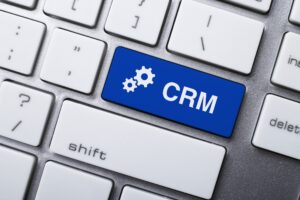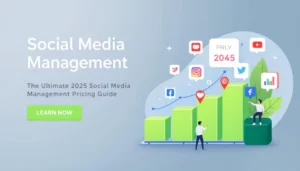
A company is strong because of the people who work there. Strategy, image, and sales are all important, but how well a business runs its own processes is what makes it great in the long run. Still, as many agencies get bigger, they have trouble with jobs that are hard to understand, processes that are spread out, and broken communication. Things that worked for a small group are breaking down now that there are more clients, bigger projects, and new jobs.
In this case, a CRM system does more than just help you keep track of your customers. It’s what makes working together as a team possible. With CRM systems, teams can work together more efficiently, communicate better, and break down silos. Businesses can then run like well-oiled tools. This article will discuss how a CRM team collaboration agency model can make things better for both clients and workers, bring the business closer together, and boost growth more quickly.
Why Collaboration Becomes Harder as Agencies Grow
When a business is small, people usually work together without being told to. The people on the team sit close to each other, talk about the news without getting too serious, and decide what to do right away. But that ease goes away as the business grows. Teams work on different projects at the same time when groups split up, making it harder to see who is responsible for what. Miscommunication starts to happen, which leads to extra work, missed details, and projects being late.
One of the hardest things for agencies to deal with now is this change. When there aren’t any clear processes in place, chances are missed and client relationships get tense. People depend on separate tools like email threads, chat apps, and files, which makes internal conflict worse. Things that were once doable become a mess.
HubSpot’s industry study has shown over and over that one of the main reasons growing service-based businesses aren’t as efficient is that their employees don’t work together well. The agency’s internal organization becomes reactive instead of planned without a single platform.
How CRMs Create a Centralized Hub for Teams
There is order in this mess with a CRM. It is the agency’s core nerve system because it brings together information, processes, and contact in one place. Every conversation, job, and update with a client happens in a single space where everyone on the team can see what’s going on at any given time.
Teams don’t have to look through email threads or chase down coworkers to get progress reports. Instead, they can quickly see project timelines, who is responsible for what, and contacts with clients. This amount of exposure gets rid of uncertainty and cuts down on wait times. Also, nothing gets missed, even when people from different areas are working on the same account.
G2 looked at businesses that use CRM-based teamwork and found that they are more efficient in how they do things. Because everyone is working together on the same system, agencies say they can turn work around faster, make fewer mistakes, and give better work to clients. The CRM is the only source of truth for the whole business, so everyone is on the same page.
Empowering Teams with Clear Roles and Processes
One of the best things about using CRM that people often forget is that it makes jobs and duties clear. As an agency grows, it’s more important than ever to make sure everyone knows what their job is at each stage of the client path. Without this consistency, people do the same things twice or forget to do them, and responsibility is weakened.
A CRM can help with this by giving out jobs, setting due dates, and keeping track of work in a neat way. Members of the team know exactly what is expected of them, and managers can see how each job is going without having to oversee. This not only increases output, but it also boosts happiness on the team because everyone knows how they fit into the bigger plan.
According to HubSpot’s research on organized teamwork, teams that have clear methods always do better than teams that rely on informal communication. In an agency setting, this framework is very important for keeping quality and speed high as the work load grows.
Encouraging Cross-Department Collaboration
A lot of the time, different teams at modern firms work together on the same client’s business. The jobs of strategy, creativity, technology, and account management all touch each other all the time. These relationships can easily become broken up without a sharing system. A CRM makes it easy for these different teams to work together by giving everyone a single view of project progress and client information.
For instance, while the strategy team is making campaigns, the creative team can use the same client notes and schedules to make sure their work is consistent. The technology team doesn’t have to rely on different reports to keep track of development plans. This shared view cuts down on confusion and lets all departments work together.
Neil Patel has talked a lot about how cross-functional teamwork is one of the most important ways to get great results for clients. When agencies use a model that is focused on CRM, they help units work together better, turning possible conflict into useful cooperation.
Enhancing Internal Communication and Culture
Working together isn’t just about tools; it’s also about how people work together. A CRM makes it easy for people to get in touch with each other, which pushes them to work together. The people on the team can look back at old project and talk records and leave updates for each other that give them more information. This takes away the stress of forgetting things or giving jobs to other people that aren’t clear.
This method makes a society where people are responsible and help each other over time. The team doesn’t depend on recollection or casual conversations; they utilize what they already know. New workers may learn things quicker since they can access to all the information they need right away in the CRM. When managers can observe where issues are occurring, they can educate better.
HubSpot’s research suggests that businesses with well-organized ways for employees to talk to each other have happier workers and fewer individuals quitting. When people know where to obtain knowledge and how to contribute, they feel more in command of their tasks and more confident.
Driving Growth Through Collaboration
Working together not only makes things operate more smoothly in a business, but it also helps it flourish. When agencies work together successfully, they get work done more often, connect with clients better, and come up with new ideas more quickly. When agencies employ a CRM as the hub of collaboration, they may expand in new ways.
According to study by G2, companies that use teamwork tools based on CRM close deals faster and keep clients longer because their teams work together. Campaigns are sent out on time, customer feedback is better incorporated, and the general level of service improves. In a busy market, this dependability gives you an edge over other sellers.
Neil Patel has said that growth comes from methods that can be used again and again, not from one-off attempts. When companies use CRM systems to organize how people work together, they build a base that can handle more clients, bigger contracts, and more complicated tasks without losing their edge.

Conclusion
Agencies that do well depend on people working together. When teams get bigger and there are more tasks to do, using informal methods or communication that is spread out can backfire. By centralizing information, making roles clear, and encouraging a culture of harmony, a CRM team collaboration agency model can turn that problem into a strength.
All three of these studies—by HubSpot, G2, and Neil Patel—find the same thing: companies that use organized teamwork grow faster, get better results, and keep clients and top employees longer. The CRM isn’t just a tool for managing clients for companies that want to grow over the long term; it’s what keeps the team together and drives success.






